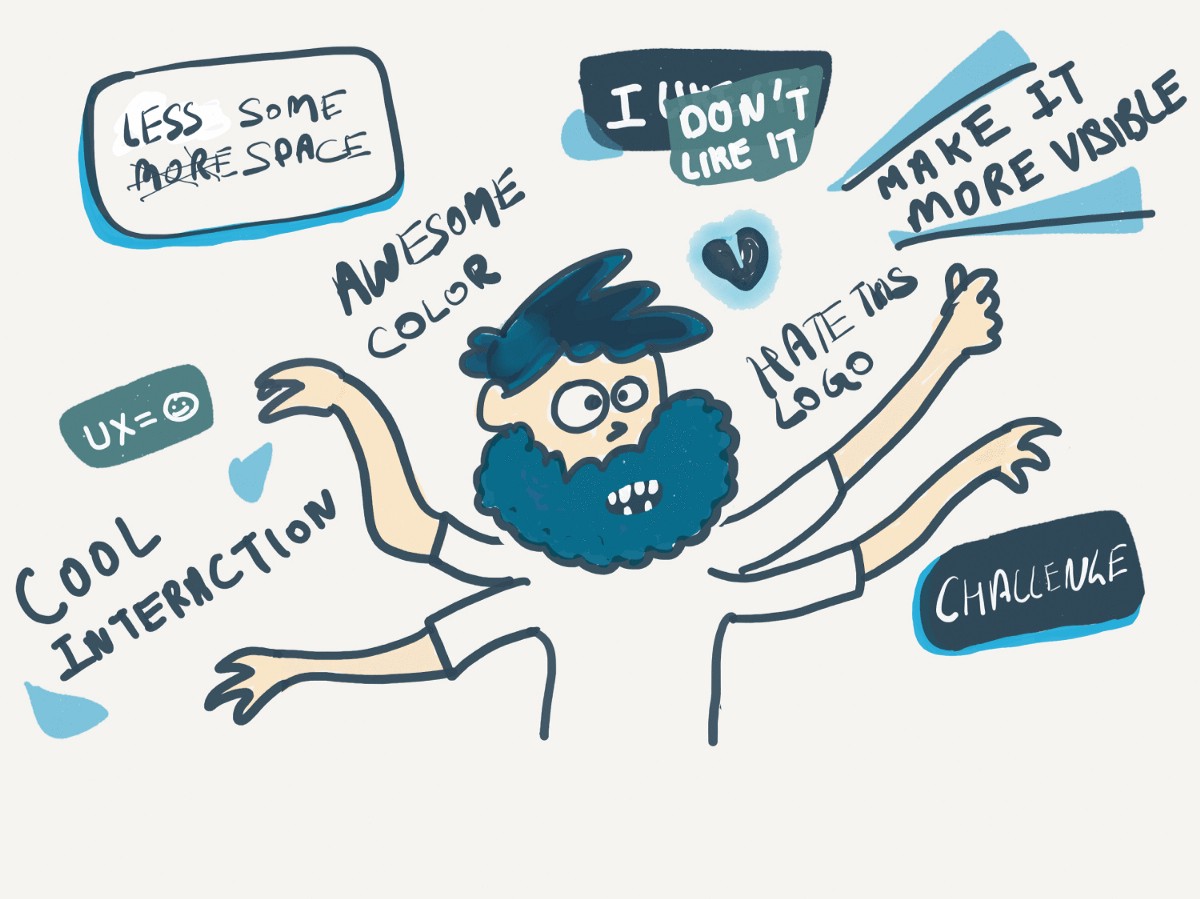
Have you ever felt offended when someone reviews your design and gives some feedback. Or huhh! There is no way to get the review conversations in the right direction.
Here in Intelligaia we focus on how to make the review cycles powerful, we should study the conversation patterns and try to organise the discussion in a way that they progress in a fruitful direction.
But how?
Firstly, let’s focus on when the conversation goes wrong what happens:
- Teams lose trust
- Team members try to avoid further discussions
- Arouses anger
- Projects suffer
- Dead bed for innovation
So what is the root of the problem?
You always use the word “Feedback”. We always ask people to give feedback on our designs or vice versa. This is the main problem.
Asking and giving feedback is wrong. Feedback means just a response or a reaction. It is based on personal biases. Someone’s reaction cannot help improve designs. There are three kinds of Feedback we always give and take:
- Reactive Feedback — happens quickly, based on desires

2. Cultural Feedback — based on what people want to hear rather than what is presented in design

3. Directional Feedback — based on one’s expectation of what the solution should be.

What should we do to resolve this problem?
Design critique is the answer. Design critique uses critical thinking to evaluate the designs if they are meeting the objectives or not.
Framework for critique:
Identify a particular aspect in design
Relate that aspect to the objective
Describe how and why the aspect supports or not supports the objective
In this way our conversations will be more focused on goals and will have a good direction all the time. Design critique helps know what we want and why we want feedback. It will definitely help get good results.
Benefits of Design Critique:
- Shared vocabulary — teams develop a common language which helps build same mindset
- Iteration driver — helps editing designs from the start of the process itself even in the sketching phase rather than iterating design workflows in later stages
- Consensus finder — it helps create a natural language among all the teams : designers, developers and Project Managers; all start discussing designs that work best to achieve desired goals.
There are two roles in The process.
- Giver
- Recipient
Let’s Look at best practices to do a critique.
As a giver:
- Lead with questions
- Filter your thoughts
- Don’t assume things
- Don’t be biased
- Think about the goals and users
- Not an ideation phase
- Talk about positives as well
As a Recipient:
- Be a good listener
- Take things positively
- Don’t ask for critique just for praise
- Don’t ask it at all
- Respect the critique
- Return to the basics
- Participate well
Things to avoid while giving critique
- Selfishness— Don’t be selfish not to give feedback; don’t think others will get benefit out of your thoughts.
- Untimely — don’t start the critique conversation when the recipient is not ready.
- Incomplete — Don’t do a half baked cookie; your “What” should be supported by “Why” always.
- Preferential — Don’t make it personal; always think about the persona’s goal while making any statement.
